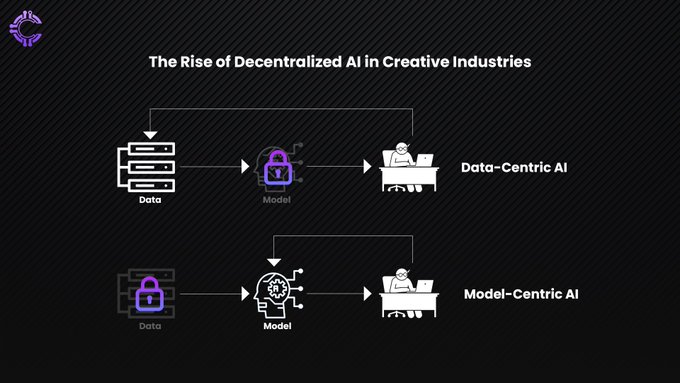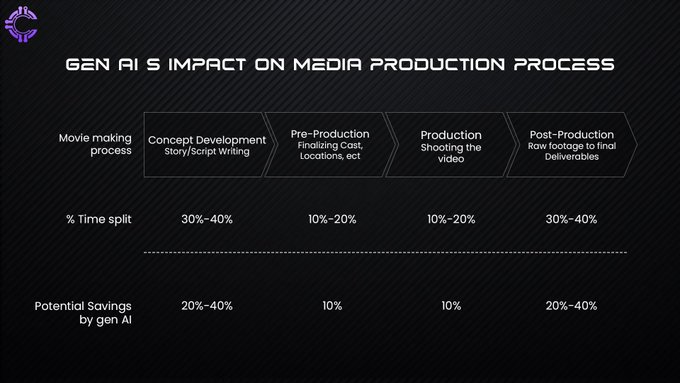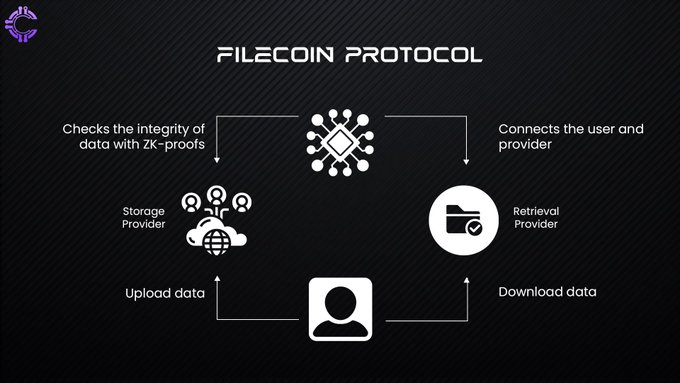Breaking Creative Monopolies with AI-Driven Multimedia Agencies
Jan 23, 2025
8 min Read

The creative world, long dominated by centralized media giants and traditional agencies, faces a transformative moment. A handful of conglomerates dictate what content is produced, who gets to create it, and how it’s distributed. While this structure has brought us globally acclaimed works, it has also created a stifling monopoly that limits creative freedom and diversity.
AI-driven multimedia agencies are now stepping into the fray, offering a decentralized alternative. By leveraging cutting-edge technology, these platforms promise to disrupt the existing ecosystem, lower barriers to entry, and democratize creativity for a global audience. *“This isn’t just evolution, it’s a revolution in how creativity is produced, owned, and shared.”*
The Current Creative Landscape: Understanding the Monopolies
Traditional Media Gatekeepers
In the United States, media ownership has become increasingly concentrated over the past few decades. In 1983, approximately 50 companies controlled 90% of U.S. media. By 2011, this number had dwindled to just six corporations: AT&T, CBS, Comcast, Disney, News Corporation, and Viacom.
This consolidation means that a small group of executives holds significant influence over the information and entertainment consumed by the public. Such concentration can limit diverse perspectives and reduce competition within the industry.
The dominance of these conglomerates raises concerns about the homogenization of content and the marginalization of independent creators. With fewer voices controlling the narrative, there’s a risk of diminished journalistic integrity and a narrowing of the public discourse.
This dominance limits opportunities for smaller creators and enforces rigid cost structures that make market entry almost impossible.

*“Centralized control creates uniformity, not innovation,” critics argue. Creativity is curated through profit lenses, sidelining original voices in favor of predictable returns.*
Why - Centralized Creative Economy?
Traditional media agencies have resource-intensive models, concentrating power in hubs like Hollywood or London. Talent acquisition becomes an exclusive game, with opportunities often limited to those in specific geographies or networks. This model also bottlenecks global diversity, leaving unique perspectives underrepresented.
Pain Points in the Current System:
High Costs:
Production and distribution costs remain prohibitive for independent creators.
Limited Access:
Gatekeeping restricts distribution channels for new voices.
IP Challenges:
Centralized ownership of creative rights limits creator autonomy.
Barriers to Entry:
Geographic and economic hurdles keep global creators out of the mainstream.

The Rise of Decentralized AI in Creative Industries

AI-driven disruption in creative industries hinges on two foundational approaches: data-centric and model-centric AI. Both paradigms bring unique advantages, but their combination holds the greatest promise for reshaping content creation.
Data-Centric AI: Elevating Quality Through Precision
Data-centric AI prioritizes the quality and relevance of training data. It focuses on dataset curation, governance, and engineering, ensuring models learn from diverse and unbiased sources. Platforms like Ocean Protocol🔗 lead the way with data quality verification systems, enabling decentralized data markets that incentivize well-curated datasets.
1. Consistent stylistic coherence.
2. Authentic cultural relevance in content.
3. Reduced bias through fair data practices
*“Better data builds better creativity,” as this approach empowers models to understand nuanced contexts and deliver outputs that feel more human and connected"*
Model-Centric AI: Unlocking Innovation
Model-centric AI emphasizes optimizing architectures, parameters, and designs. It’s about making algorithms smarter and more efficient. Stability AI🔗 exemplifies this approach by developing state-of-the-art generative models that push boundaries in image and video synthesis.
1. Tailored innovations for creative tasks.
2. Computational efficiency, lowering costs.
3. Novel capabilities, such as EleutherAI’s open-source model developments, which democratize creative tools.
Hybrid AI Models: The Convergence of Data and Design
Emerging hybrid systems balance data quality and model optimization.
Hybrid models bridge the gap between data-centric and model-centric AI by combining meticulously curated datasets with cutting-edge algorithmic designs. This synergy ensures outputs that are both contextually rich and computationally efficient, enabling the creation of high-quality, adaptive content for diverse applications.
Democratizing Creative Tools
Decentralized AI tools like Stable Diffusion changes the creative landscape by offering open-source, professional-grade capabilities for image and content generation. Unlike proprietary systems locked behind paywalls, these tools are accessible to anyone, fostering inclusivity and creativity.
By removing technical barriers, AI models empower individuals and small teams to produce high-quality content that rivals industry leaders. Projects like RunwayML extend this further by providing accessible, no-code platforms for video editing, design, and more.
*“AI models can turn creativity into a shared resource, giving creators the freedom to innovate without limitations imposed by cost or expertise.”*
New media Agency Model :DAOs
Creative DAOs bring transparency and collective governance to the heart of the creative process. Structure and Governance: DAOs operate using smart contracts, ensuring decisions are made democratically and resources are allocated fairly.
Case Studies:
Funds and supports creative initiatives in music, events, and media, all holding their token.
Leverages NFT sales to fund projects that expand its cultural footprint. The projects can be of any kind including media projects.
By aligning incentives through token-based systems, DAOs offer a sustainable and community-focused approach to creativity.
AI-Driven Production Pipelines
AI reshapes creative workflows, making them faster and more efficient across all stages of production.

1. Content Creation
AI-driven multimodal systems generate assets like visuals, text, and audio in a fraction of the time. MidJourney, for instance, is democratizing image generation by providing decentralized access to cutting-edge AI. Automated systems also allow creators to produce large-scale projects without relying on traditional production teams. AI ensures consistency and quality control, reducing errors and maintaining high standards.
2. Post-Production
Post-production processes like video rendering, editing, and effects are decentralized through networks such as LivePeer, which eliminates costly intermediaries and offers scalable solutions. Collaborative workflows powered by AI allow global teams to edit and refine work in real-time.
AI-powered tools eliminate bottlenecks, enabling creators to focus on storytelling and artistry while automating repetitive tasks.
Distribution and Monetization
Decentralized platforms and tokenization are revolutionizing how creators distribute and monetize their work.
1. Content Platforms:
Audius🔗 allows musicians to bypass intermediaries, distribute their music directly, and retain ownership rights.
2. Smart Contracts for Licensing:
Creators can automate royalty payments, ensuring fair compensation and eliminating disputes and projects like Story Protocol🔗 for monetizing media IPs.
3. Tokenized Revenue Sharing with NFTs:
Creators tokenize their work into NFTs, which act as both assets and revenue-sharing mechanisms. Buyers of NFTs gain fractional ownership or access rights, and creators earn royalties on secondary sales.
Tokenized revenue sharing empowers fans to invest in art, music, and other creative works, fostering a deeper connection between creators and their audiences.
Impact on Creative Industries: A New Era of Democratization
The creative industries are entering a transformative phase driven by decentralization and AI. As gatekeepers lose their grip, new technologies are dismantling traditional barriers, empowering creators, and redefining how content is made, shared, and owned.
Democratization of Production:
Decentralized tools aren’t just removing obstacles; they’re reimagining the entire creative process.
1. Lower Barriers to Entry
Traditional creative industries demanded immense resources-expensive software, specialized hardware, and access to global distribution channels. With decentralized solutions, creators now have access to professional-grade tools at a fraction of the cost.
Imagine a filmmaker in Nigeria collaborating with a motion graphics designer in Brazil, using AI-powered tools and decentralized storage. The global talent pool is accessible, and the traditional barriers of geography, cost, and expertise fade away.
2. Enhanced Collaboration
Decentralized platforms like Radicle bring creators together in cross-border teams. Artists, writers, and developers can collaborate in real-time, pooling resources and sharing skills without relying on centralized intermediaries. This model fosters innovation, allowing teams to work on projects with unmatched flexibility and speed.
Community-Owned Platforms: Revolutionizing Content Sharing
Ownership of creative platforms is shifting from corporations to users. Platforms like Mirror allow writers, artists, and creators to directly monetize their work through user-governed systems. Using stake-based decision-making and revenue-sharing models, these platforms ensure that profits benefit the community rather than centralized stakeholders.
Decentralized publishing platforms offer creators freedom to share their work without censorship, while tokenized revenue-sharing models enable fans to directly support their favorite artists, creating a closer, more meaningful connection.
Storage Solutions: A Backbone for Decentralized Creativity
Decentralized content creation requires secure, scalable, and efficient storage solutions. Content-addressed storage ensures data integrity, while distributed file systems eliminate the risks of central points of failure. Platforms like Filecoin provide creators with redundancy mechanisms, ensuring that their work is safe, accessible, and immune to tampering.

The Creative Revolution: A New Era Unfolds
The creative industry is entering a transformative phase, driven by decentralization and AI. This shift is dismantling traditional gatekeepers, empowering creators to take ownership of their work, and redefining how art and content are produced, shared, and consumed. By eliminating barriers and expanding access to professional-grade tools, creators now have the freedom to experiment, innovate, and thrive on their own terms.
Interactive and adaptive formats, AI-human collaborations, and emergent art forms are breaking new ground, challenging traditional notions of creativity. Decentralized networks ensure that artists maintain ownership and control over their work, while new systems of funding and distribution are making it easier than ever for creators to reach global audiences.
Building the New Creative Economy:
This transformation isn’t just technological; it’s economic and cultural. Decentralized systems foster collaboration and innovation, enabling a global network of creators to work together, share resources, and reach audiences without intermediaries. AI augments creative workflows, helping creators focus on their vision while automating repetitive tasks, making the process faster and more efficient.
The economic model is also shifting. Tokenized revenue sharing and decentralized governance are creating more equitable opportunities for creators. Instead of relying on centralized platforms, artists can now directly engage with their audiences and retain control over their work.
Culturally, this decentralized future promises a richer, more diverse creative landscape. With reduced barriers to entry, creators from all backgrounds can contribute to a global tapestry of innovation and expression. As decentralization becomes the foundation of the creative economy, it paves the way for a dynamic and inclusive future where creativity knows no limits.
About Cluster Protocol
Cluster Protocol is the co-ordination layer for AI agents, a carnot engine fueling the AI economy making sure the AI developers are monetized for their AI models and users get an unified seamless experience to build that next AI app/ agent within a virtual disposable environment facilitating the creation of modular, self-evolving AI agents.
Cluster Protocol also supports decentralized datasets and collaborative model training environments, which reduce the barriers to AI development and democratize access to computational resources. We believe in the power of templatization to streamline AI development.
Cluster Protocol offers a wide range of pre-built AI templates, allowing users to quickly create and customize AI solutions for their specific needs. Our intuitive infrastructure empowers users to create AI-powered applications without requiring deep technical expertise.
Cluster Protocol provides the necessary infrastructure for creating intelligent agentic workflows that can autonomously perform actions based on predefined rules and real-time data. Additionally, individuals can leverage our platform to automate their daily tasks, saving time and effort.
🌐 Cluster Protocol’s Official Links:
